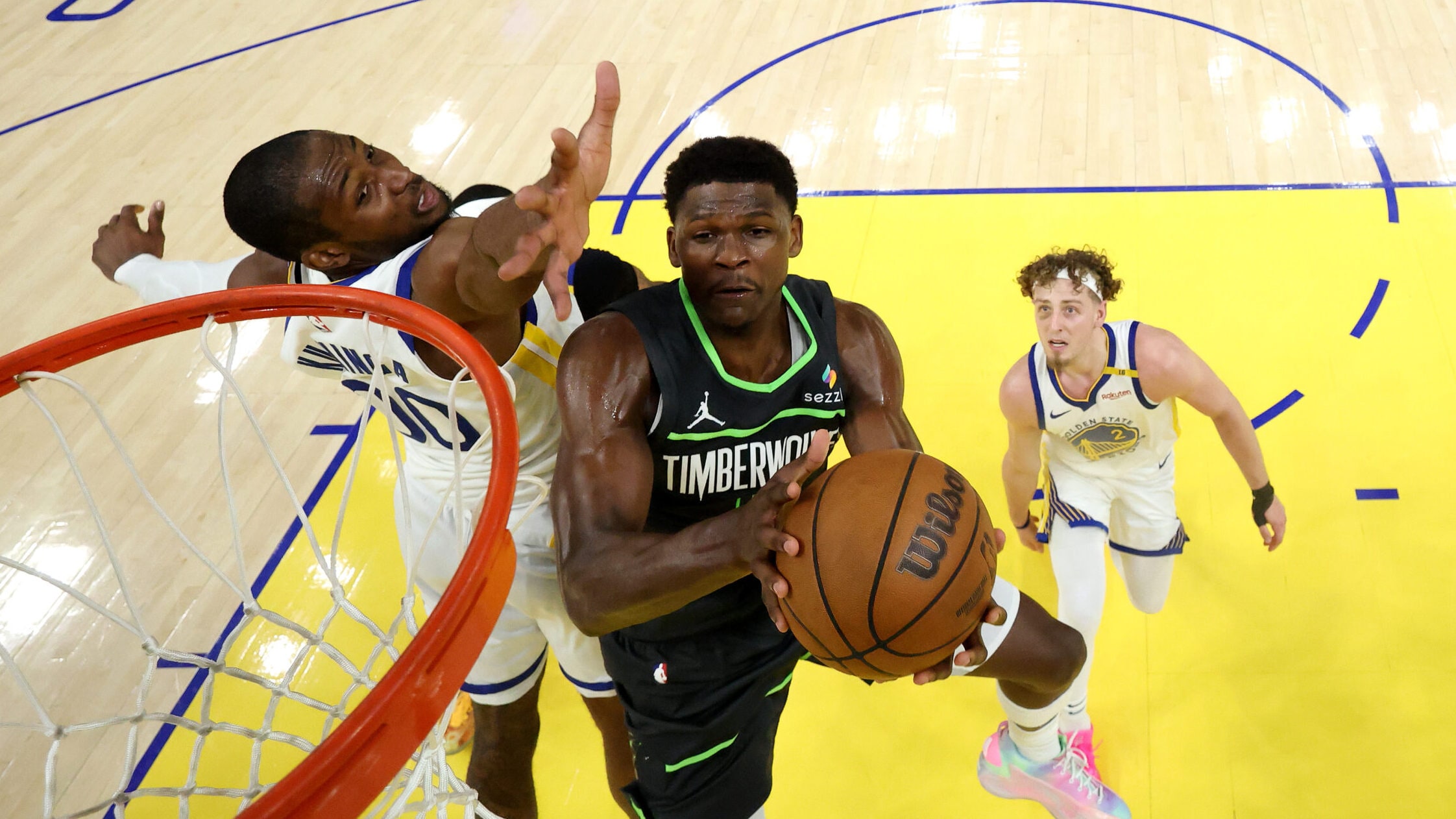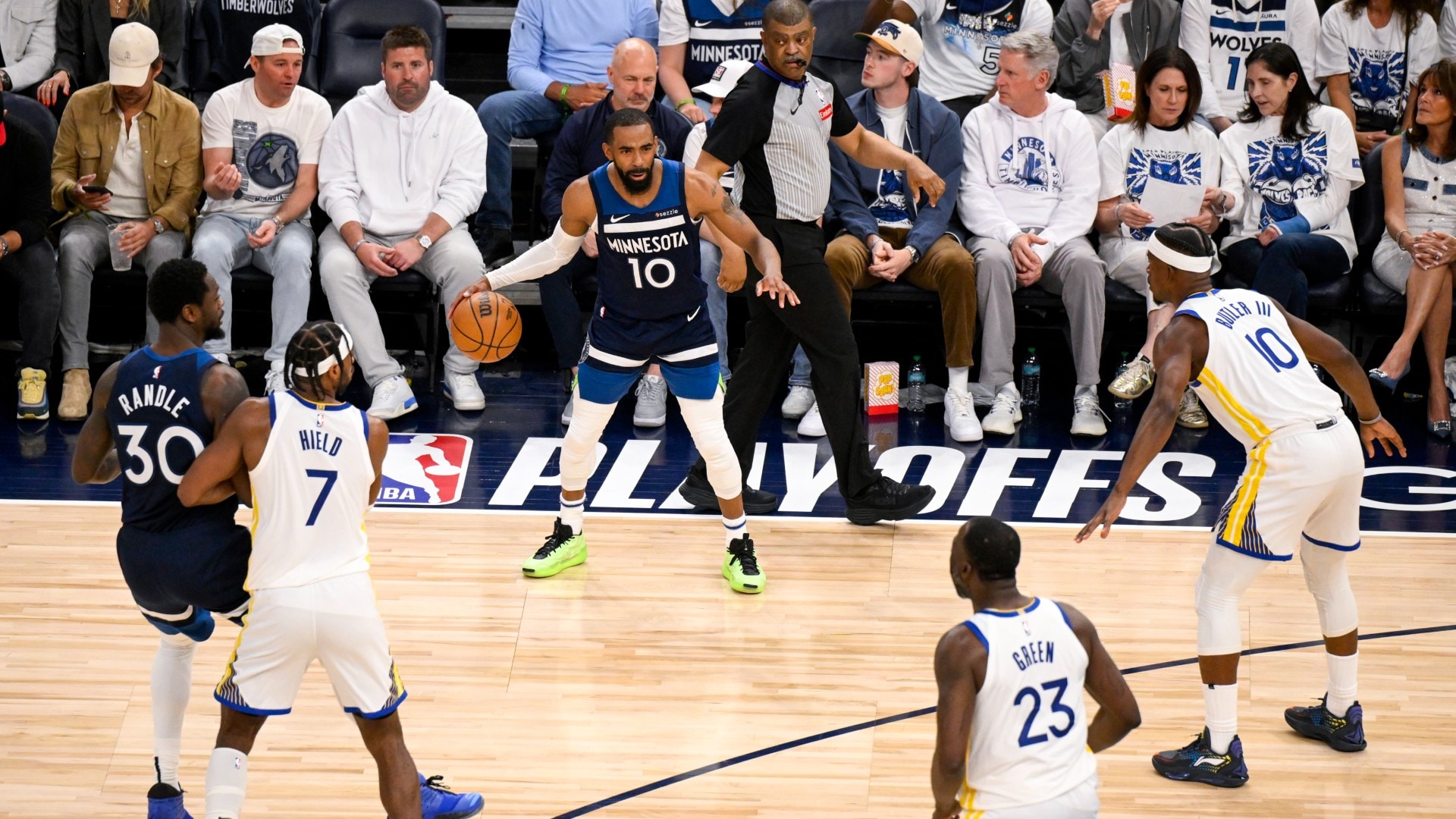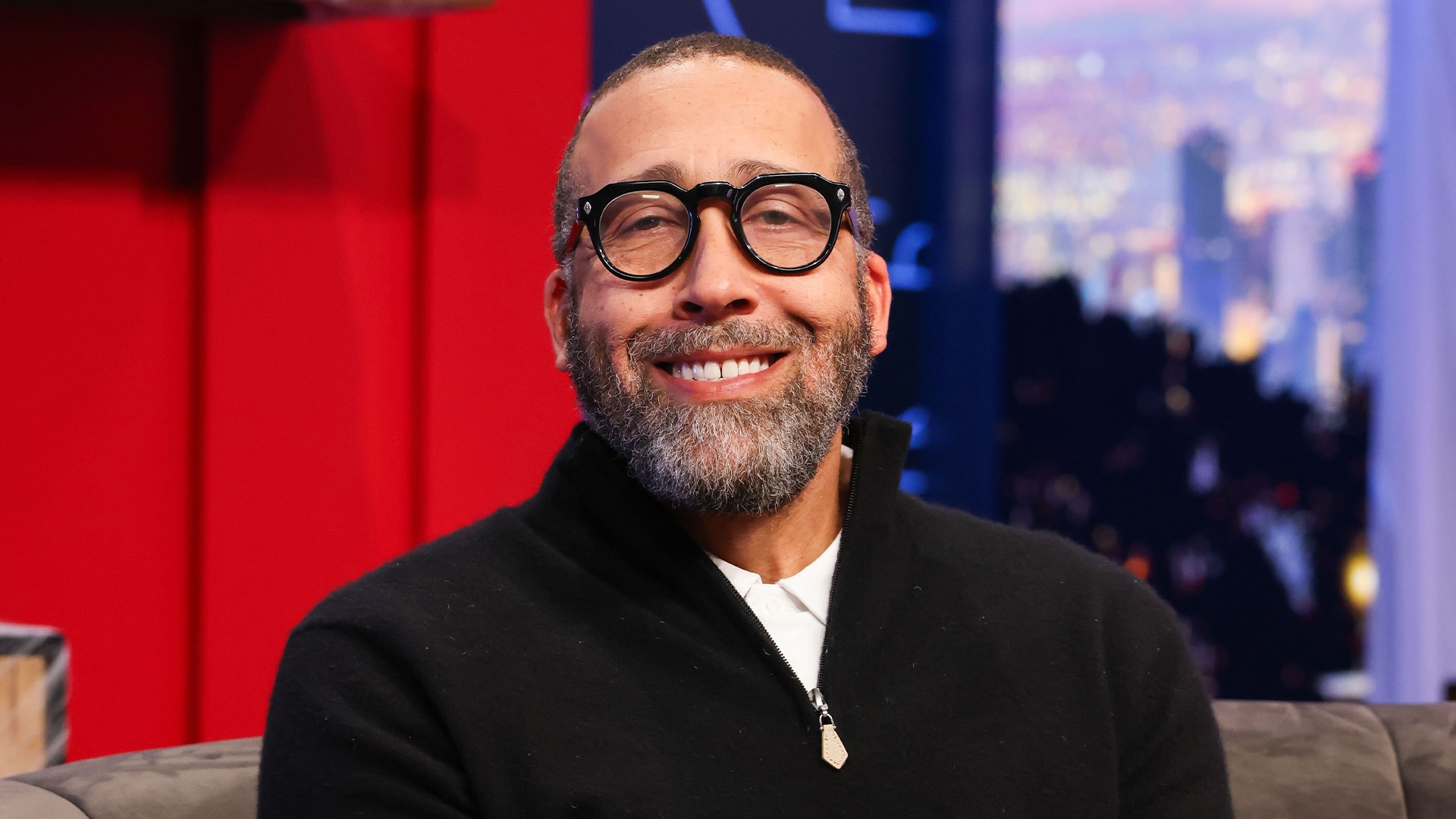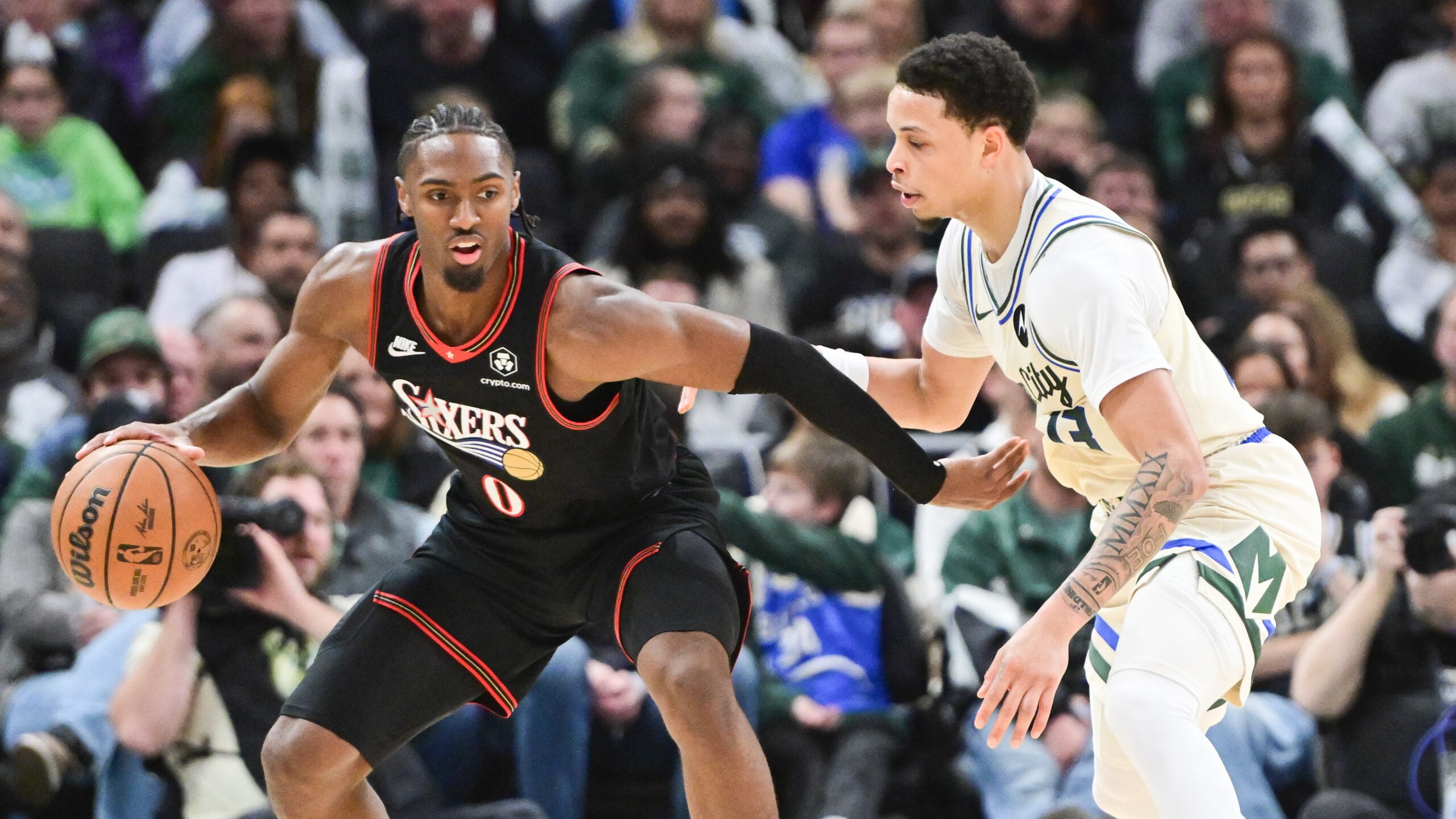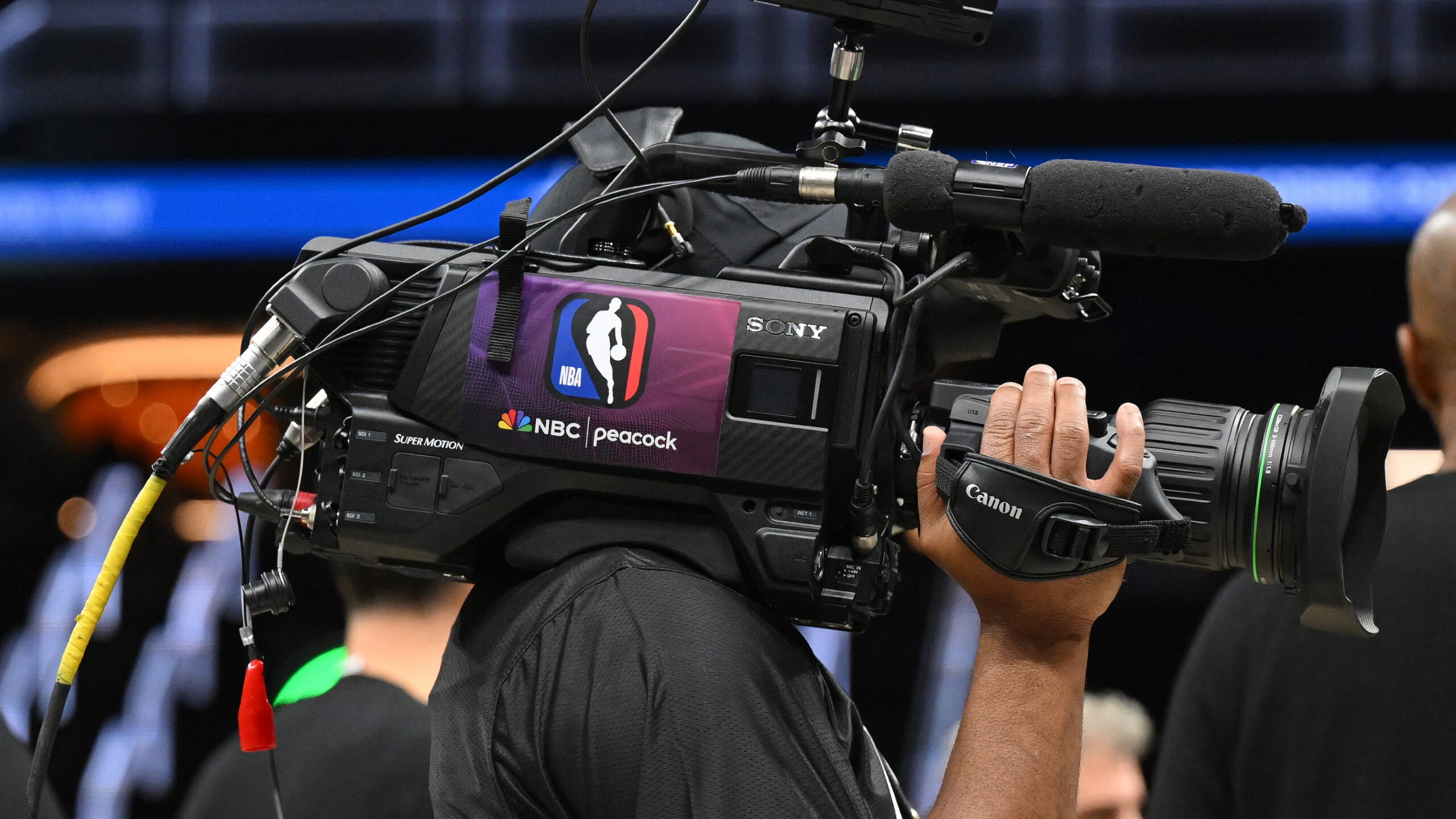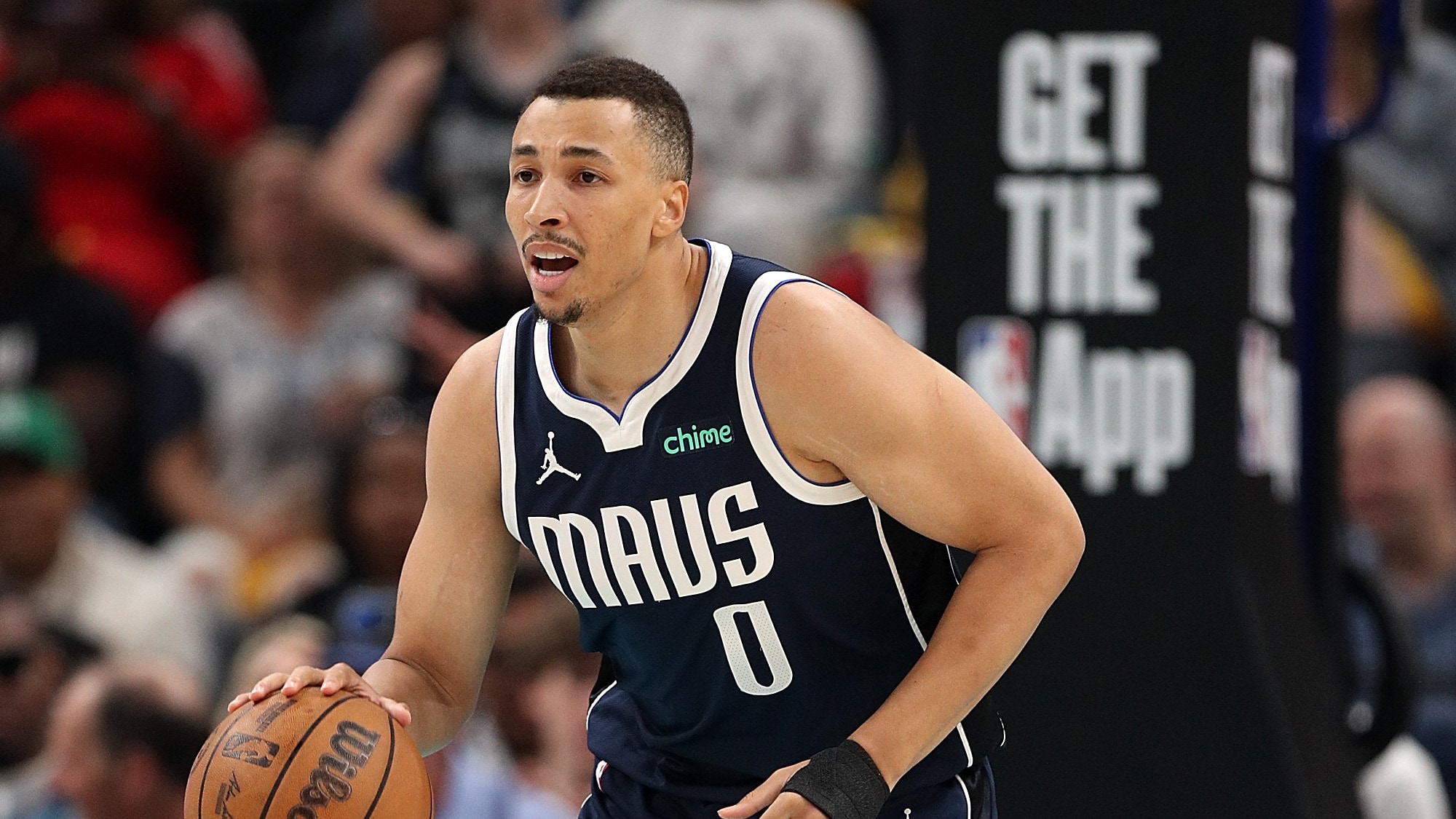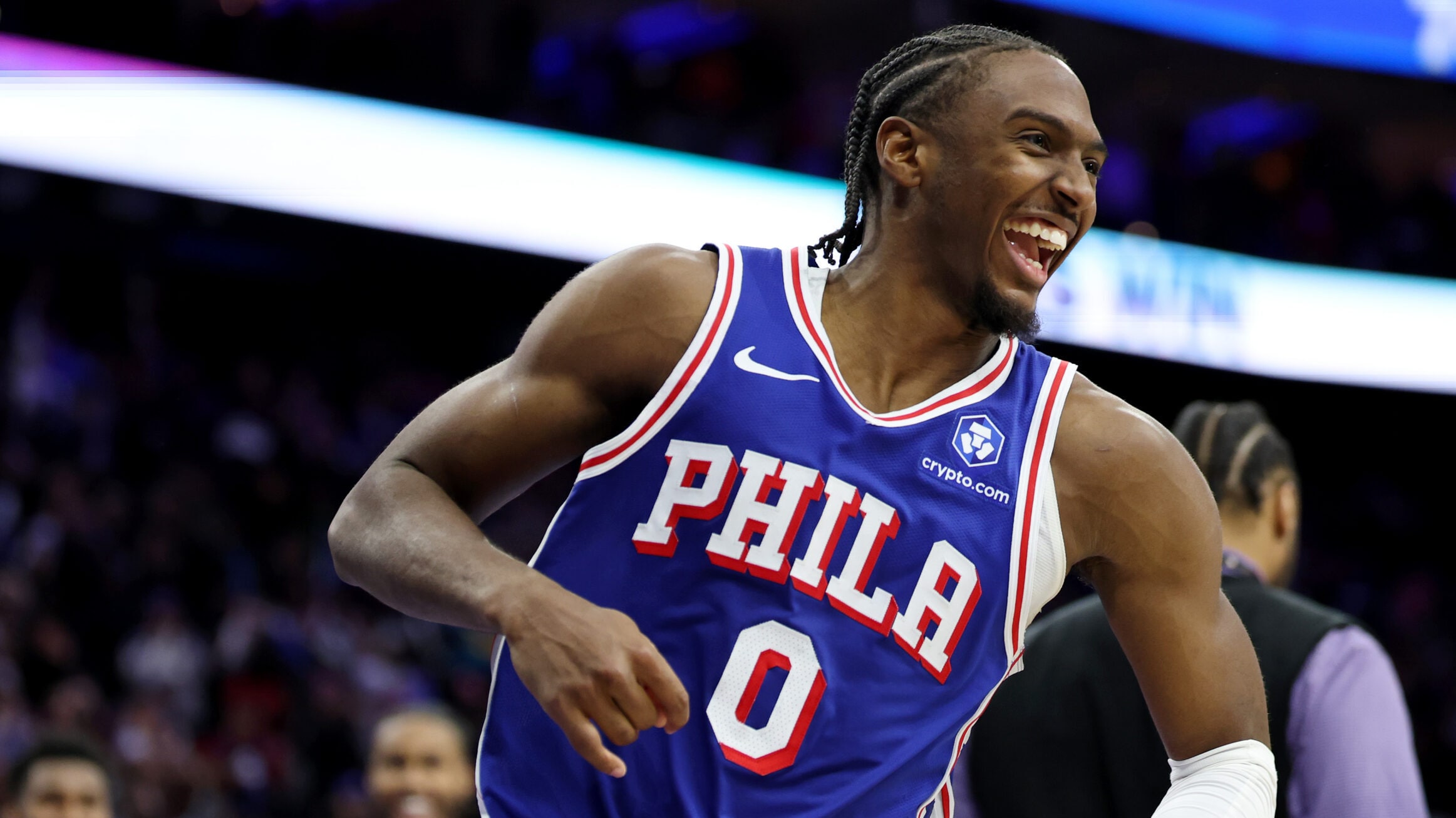
Julius Randle has showcased his dominance on both ends of the floor during Minnesota’s 2025 playoff run.
Editor’s Note: Read more NBA coverage from The Athletic here. The views on this page do not necessarily reflect the views of the NBA or its teams.
* * *
SAN FRANCISCO — When the Minnesota Timberwolves were in their deepest trouble in Game 3 against the Golden State Warriors, when it looked like they could be headed toward a loss that would not only embolden their opponent, but open the door for injured star Steph Curry, they did what they have done so many times this season. They turned to Julius Randle.
Trailing by five with just over seven minutes to play, Randle put Draymond Green on his left hip as he took a bounce pass from Anthony Edwards. Randle cleared Green out with a simple rotation of his hips, dispatching the all-world defender as he surged to the basket. Randle’s head nearly cleared the rim as he elevated and threw down a massive dunk that ignited the Timberwolves.
On the next possession, Randle fed Edwards for a driving layup to cut the deficit to one point. Then he found Edwards for a 3-pointer. In a matter of 43 seconds, the Wolves went from trailing 82-77 to leading 84-82, and Randle wasn’t done there.
He made the pass to Jaden McDaniels to spring him for a dunk attempt that drew Green’s sixth foul. He made an over-hand bullet pass to McDaniels on the wing for a 3-pointer that put the Wolves up six. He dropped off a pass to Rudy Gobert for a dunk and three-point play, and then he grabbed the rebound of his life with 1:34 to play before hitting Edwards with a pass for a corner 3 that sealed the win.
Edwards stole the show with 36 points in the game, but the Wolves would not be up 2-1 in the series heading into Game 4 on Monday night were it not for Randle’s all-around game. Once viewed as a player who shrunk in the playoff spotlight, Randle has been a revelation in his first postseason for the Timberwolves. His latest gem came in Game 3, when he put up 24 points, 12 assists and 10 rebounds, joining Kevin Garnett as the only players in Wolves history to record a triple-double in the playoffs.
“He’s just almost another point guard out there,” Timberwolves coach Chris Finch said. “It’s everything for us. It’s been everything for our turnaround. It’s everything for our team.”
After languishing for most of the first half of the season, the Wolves and Randle found their footing. They are 28-6 in the last 34 games Randle has played, including 6-2 in the playoffs.
Randle accounted for 54 points in Minnesota’s 102-97 win on Saturday, including 30 from his assists. He also was responsible for 54 points in the 117-93 victory in Game 2, meaning he has generated 49 percent of the team’s points over the last two games. It all comes after he averaged 22.6 points and shot 39 percent from 3 in the Wolves’ five-game victory over the Los Angeles Lakers in the first round.
Suddenly, one of the biggest questions surrounding the Timberwolves heading into the playoffs has become one of their biggest strengths. The violence in Randle’s game gives the Wolves a toughness they did not have last year, on both ends of the floor. And after it was clear that his time in New York had run its course after five seasons as an alpha scorer, the trade that brought him and his family to Minnesota has unlocked a more dangerous version of his game as a facilitator.
“I feel a part of the group. I’m not just standing around,” Randle told The Athletic. “I think Finch just trusts my ability. He puts the ball in my hands, my ability to make plays and put me in actions, it’s a bunch of different things.”
The comfort level with this team and this coach was there practically from the start for Randle. The on-court harmony that is singing in these playoffs? That took a lot of time and effort and struggle during the season to form.
In the hours after one of the most surprising trades of the NBA season, the logic behind the Timberwolves trading Karl-Anthony Towns to the Knicks for Randle, Donte DiVincenzo and a first-round pick started to emerge.
There were clear financial motivations for making the trade. Towns was on a max contract, and with the new collective bargaining agreement making it even more difficult for teams to carry exorbitant payrolls, the Wolves felt they needed to reconfigure their cap sheet so that they could eventually dip under the dreaded second apron and build around Edwards for the long term.
In the chaos of that late September moment, just days before the Timberwolves were set to open training camp, while everyone was trying to figure out what was going on and why the teams would pull the trigger on such a massive deal so close to the start of the season, another theme quietly started to emerge. This wasn’t just a money deal that would help the team down the road in the eyes of Timberwolves decisionmakers. This was a basketball trade that they believed would help them in the present as well.
After losing to the Dallas Mavericks in five games in the Western Conference finals, the Wolves believed they needed another bucket-getter on the team to take some of the scoring pressure off Edwards’ 23-year-old shoulders. Finch and vice president of basketball operations Dell Demps were in New Orleans during Randle’s lone season playing for the Pelicans in 2018-19. They knew what kind of player and person they were getting and believed he could be the safety valve that Edwards needed in the halfcourt.
They believed Randle’s quiet demeanor would work well with Edwards’ bravado. And they knew that the belief they had in him as a player would bring out the best in him once he got settled in his new home.
“There was a trust and a comfort level that was there right away,” Finch said of those first days after the trade. “I’m sure he was still processing everything. I’m pretty sure he was welcoming a change. I think it was the perfect environment for him.”
Randle spent five years in New York, helping re-establish the Knicks as a playoff team after years of struggle. He was named to the Eastern Conference All-Star team three times and also made two All-NBA teams. He also did not play well in his two playoff appearances with the Knicks.
In 2020-21, he was the primary scorer on a team that earned the No. 4 seed. But the Atlanta Hawks threw all of their defensive energy at stopping him, and he shot 29.8 percent from the field in a five-game loss.
Randle made just 37.4 percent of his shots over two series in the 2020-21 playoffs, a win over Cleveland and then a loss to Miami. But he was playing through a severe ankle sprain that happened in the run-up to the playoffs, an injury that required surgery after the season ended.
As Randle’s Knicks struggled to fully break through to contender status, signs started to emerge that a parting was coming. His body language was scrutinized in the media, and a shoulder injury last season prevented him from being on the floor during the team’s surge over the second half of the season. When he became eligible for a contract extension last August, neither side showed much urgency to get a deal done, and Randle started to brace for a trade.
He figured it could come during the season, when dealmaking starts to heat up as the February trade deadline approached. He never thought he would be traded in the fall before the season began. But once he got his mind around the move, things started to fall into place. Finch was an assistant on the Pelicans staff he played for, and he lobbied the Knicks to bring him to New York. Wolves assistant Kevin Hanson was also on that New Orleans staff, and Hanson’s wife, Nikki, and Randle’s wife, Kendra, were close, easing the transition for a tight-knit family.
Randle credited Wolves president of basketball operations Tim Connelly, new owners Marc Lore and Alex Rodriguez and Finch for making them feel welcome from the start.
“I felt settled from the very beginning,” said Randle, 30. “It never felt like I was in the wrong place. It was more about figuring out my role and my best way I could help the team. Living-wise and being a part of the organization, I felt comfortable. On the court it just came later down the road.”
Sliding into the starting frontcourt spot held for the previous nine years by Towns proved to be a delicate process. Towns was a former No. 1 overall draft pick who made four All-Star teams in Minnesota and was coming off of his best year as a pro, having helped lead the Wolves to the Western Conference finals for the first time in 20 years. KAT’s struggles with the Mavericks in that series had some fans ready to move on, but the way he took off in New York while the Wolves went through early growing pains with Randle and DiVincenzo brought plenty of angst into Target Center.
Randle’s statistics during the regular season were down markedly across the board from his time as the alpha scorer in New York. Last season he averaged 24.0 points, 9.2 rebounds and 5.0 assists and was named to his third All-Star team before he injured his shoulder. In his first year in Minnesota, those numbers fell to 18.7 points, 7.1 rebounds and 4.7 dimes.
When Timberwolves fans would check the box scores in the morning and see another big statistical night from Towns, who went for 24.4 points and 12.8 rebounds per game and shot 42 percent from 3-point range, the grumbling was audible.
When Randle first arrived, he took on more of a facilitator role in training camp. Finch liked what he saw, but he also believed Randle was doing so in deference to Edwards, Rudy Gobert and the rest of a core that had spent years together. It looked to the coach like Randle was trying not to step on toes, and the last thing Finch wanted was for one of the league’s biggest bully ball players to lose his aggression.
“Silly me, I’m the one who said we need you to score a little bit more,” Finch said.
After a flat opening night loss to the Lakers in Los Angeles, Finch and Edwards encouraged Randle to be more assertive. Finch wanted to be sure that Randle got enough shots, especially considering that he has a player option on his contract next season and could become a free agent this summer. He and Edwards told him not to worry about fitting in, that they would fit around him. He scored 33 points in a win over Sacramento, but the fit with his new team looked jagged for most of the first few months of the season.
The Wolves were 8-10 at Thanksgiving and 14-14 right before Christmas, far below expectations for a group looking to take the next step after losing to the Mavericks in the conference finals. Panic started to set in in some corners of the fan base as KAT put up big numbers in New York, but Finch never wavered in his belief in his power forward.
“It’s hard to block it all out,” Finch said. “But we inherited a two-time All-NBA player, a multi-time All-Star. We knew we were getting a really, really good player. It was incumbent upon us to give it every chance to work. I was pretty adamant about that.”
Oddly, it was a groin injury that kept him out of 13 games in February that may have helped crystalize everything for Randle and the Wolves. Minnesota went 5-8 during that stretch, not taking off like some fans expected when Randle was removed from the rotation. Randle watched from the sideline, and the perspective helped him better understand the skill sets of his teammates and where he best fit in.
When he returned to the lineup, he did so with the intention of being a point forward. He has always believed in his passing ability, and now the Wolves needed him to get the struggling Mike Conley going, to create easier shots for Edwards and to maximize Gobert at the rim.
“He’d always been a scorer in New York. I was sensitive to that,” Finch said. “I didn’t want him to think he wasn’t going to have scoring opportunities here in a contract year and everything else. But we needed other guys to get involved.”
Finch has pointed to a game before his injury, in New York on Jan. 17, as a major moment in the reinvention. It was Randle’s first game at Madison Square Garden since the trade, and there was plenty of reason to believe he wanted to stick it to the Knicks with a big scoring night. Randle took just six shots and scored eight points, a mature approach that helped the Wolves win easily.
Once he came back from his injury, the Wolves took off. They won their first eight games with him back in the lineup and finished the regular season on a 17-4 surge that took them out of the Play-In Tournament and gave them the sixth seed in the West. Randle only averaged 18.2 points down the stretch, but he shot 52 percent from the field, 40 percent from 3 and dished out 5.2 assists per game.
“His physicality, his demeanor, the way he can control pace, control the game on both ends of the floor, it kind of gives us some control,” Conley said. “It gives us the ability to kind of settle into who we want to be offensively and defensively.”
Randle brings a unique dichotomy to these Wolves. He plays with a toughness that allows them to stand up to even the biggest bullies on the floor. But he also has a calming influence on the offense with his ability create for himself or others when needed. After going 20-26 with a net rating of minus-8.4 points per 100 possessions in clutch time situations during the regular season, the Wolves are 4-0 with a plus-82.4 net rating in the playoffs.
Randle’s increased usage in those moments has been a big driver of the success.
“It’s funny. He does play at times like a Tasmanian devil,” Finch said. “That took us some time to figure out how to move alongside of that. But one thing we always thought he would bring us is a guy to just give the ball to in clutch moments.
“We probably should’ve used him more in clutch situations, putting the ball in his hands. Or just in a situation where you need a basket.”
It has been a big year on and off the court for the Randle family.
Randle was going through his pregame workout routine before Game 2 against the Warriors when one of his best friends, who was in town visiting, smiled at him. He had watched Randle take a FaceTime call from Kendra, who had their newborn daughter with her. Romi joined big brothers Kyden and Jaycey, who are fixtures at most every Wolves game, during the first round of the playoffs. Her arrival made Julius a girl dad, like his Lakers mentor Kobe Bryant, and Randle’s friend noticed the light she is bringing to his life.
“I was so much more calm and peaceful after that call,” Randle said. “It was almost like all my nerves left me. She’s my everything, man.”
The Randles are enjoying Minnesota. The weather is warming up, and so is the reception from once-skeptical fans. They have a house in the Minneapolis suburbs with a yard for the kids to play in, much closer to their offseason home in Randle’s hometown of Dallas than the cramped confines of New York City.
There is a desire to make this a more permanent residence. Randle could opt out of his contract and become a free agent this summer. He could exercise a $31 million player option for next season, though that seems far less likely now that he is playing so well. Both Randle and the Timberwolves are fully focused on the playoffs right now, but it is expected that they will talk after the season to see if there is a longer-term contract that works for both sides.
Randle loves the fit in Minnesota. He loves playing alongside Edwards. He loves playing for Finch.
“Having a coach believe in you, not only believe in you but challenge you every single day, when I came to Minnesota, that was the No. 1 thing I was excited about, being able to play for Finchy,” Randles said. “Because I just knew the type of coach he was, the belief he had in me. It was the perfect fit for me. They just made me perfectly comfortable as I got here.”
***
Jon Krawczynski is a senior writer for The Athletic covering the Minnesota Timberwolves, the NBA and the Minnesota Vikings. Jon joined The Athletic after 16 years at The Associated Press, where he covered three Olympics, three NBA Finals, two Ryder Cups and the 2009 NFC Championship Game. Follow Jon on Twitter @JonKrawczynski

